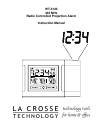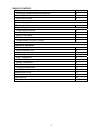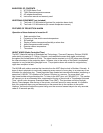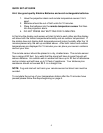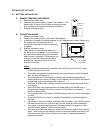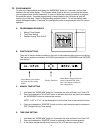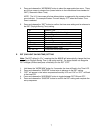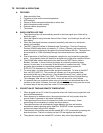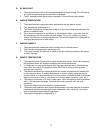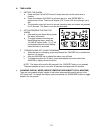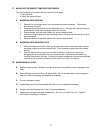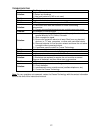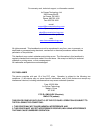3
INVENTORY OF CONTENTS
1) WT-5120 Alarm Clock
2) TX6U Remote temperature sensor
3) AC adapter/transformer
4) Instruction manual and warranty card.
ADDITIONAL EQUIPMENT (not included)
1) Two fresh 1.5V AA batteries (optional for projection alarm clock)
2) Two fresh 1.5V AA batteries (for remote temperature sensor)
FEATURES OF PROJECTION ALARM
Operation of these features is in section III
1. Radio-controlled time
2. Projection of time and/or remote temperature
3. EL backlight
4. Display of indoor temperature/humidity or alarm time
5. Indoor temperature and humidity
6. Remote outdoor temperature
7. Time alarm
ABOUT WWVB (Radio Controlled Time)
The NIST (National Institute of Standards and Technology—Time and Frequency Division) WWVB
radio station is located in Ft. Collins, Colorado, and transmits the exact time signal continuously
throughout the United States at 60 kHz. The signal can be received up to 2,000 miles away through
the internal antenna in the projection alarm. However, due to the nature of the Earth’s Ionosphere,
reception is very limited during daylight hours. The projection alarm will search for a signal every
night when reception is best.
The WWVB radio station receives the time data from the NIST Atomic clock in Boulder, Colorado. A
team of atomic physicists is continually measuring every second, of every day, to an accuracy of ten
billionths of a second per day. These physicists have created an international standard, measuring a
second as 9,192,631,770 vibrations of a Cesium-133 atom in a vacuum. For more detail, visit
http://www.boulder.nist.gov/timefreq.htm. To listen to the NIST time, call (303)499-7111. This number
will connect you to an automated time, announced at the top of the minute in “Coordinated Universal
Time”, which is also known as Greenwich Mean Time (GMT). This time does not follow Daylight
Saving Time changes. After the top of the minute, a tone will sound for every second. It is possible
that your projection alarm may not be exactly on the second due to the variance in the quartz.
However, the clock will adjust the quartz timing over the course of several days to be very accurate;
under 0.10 seconds per day.



